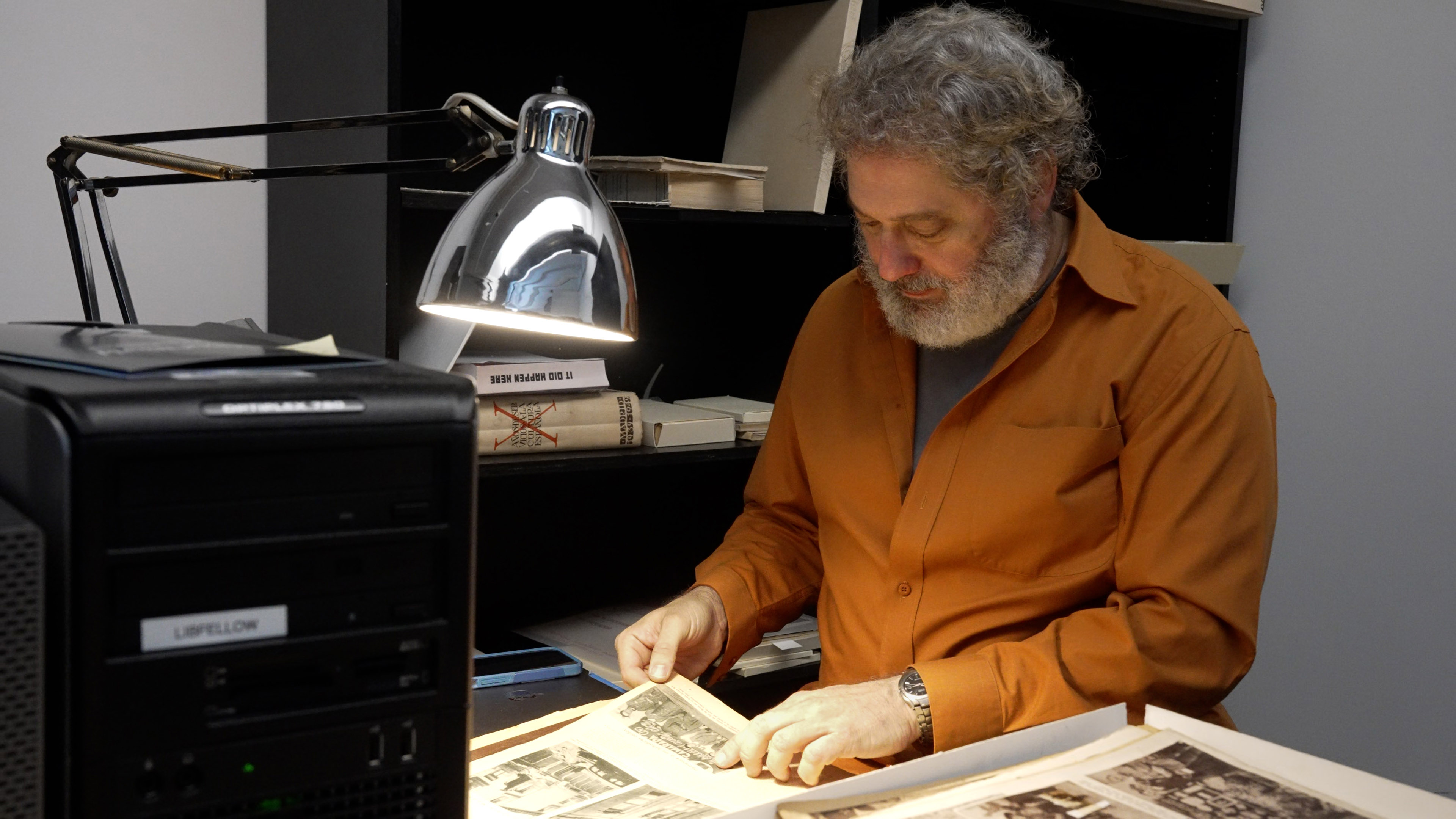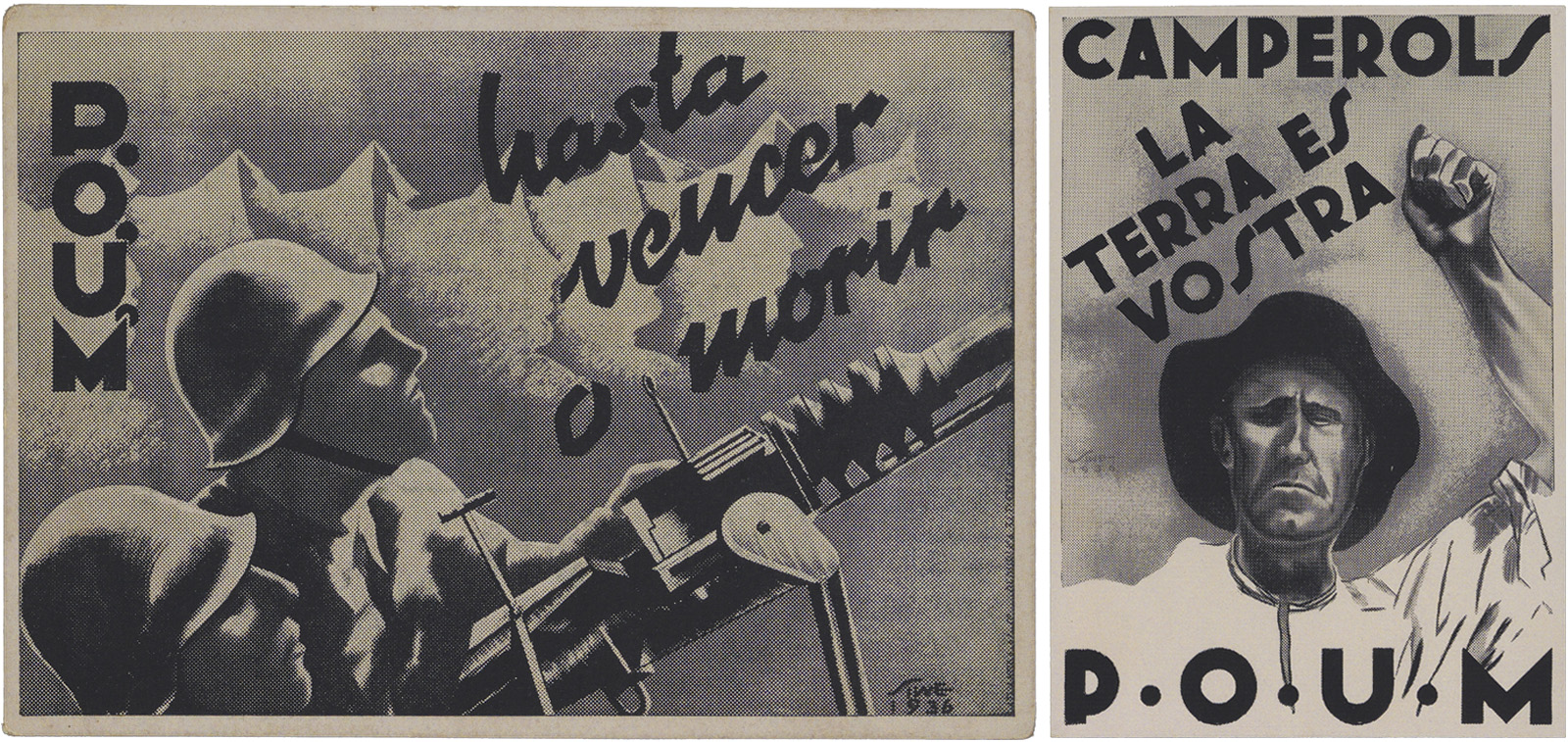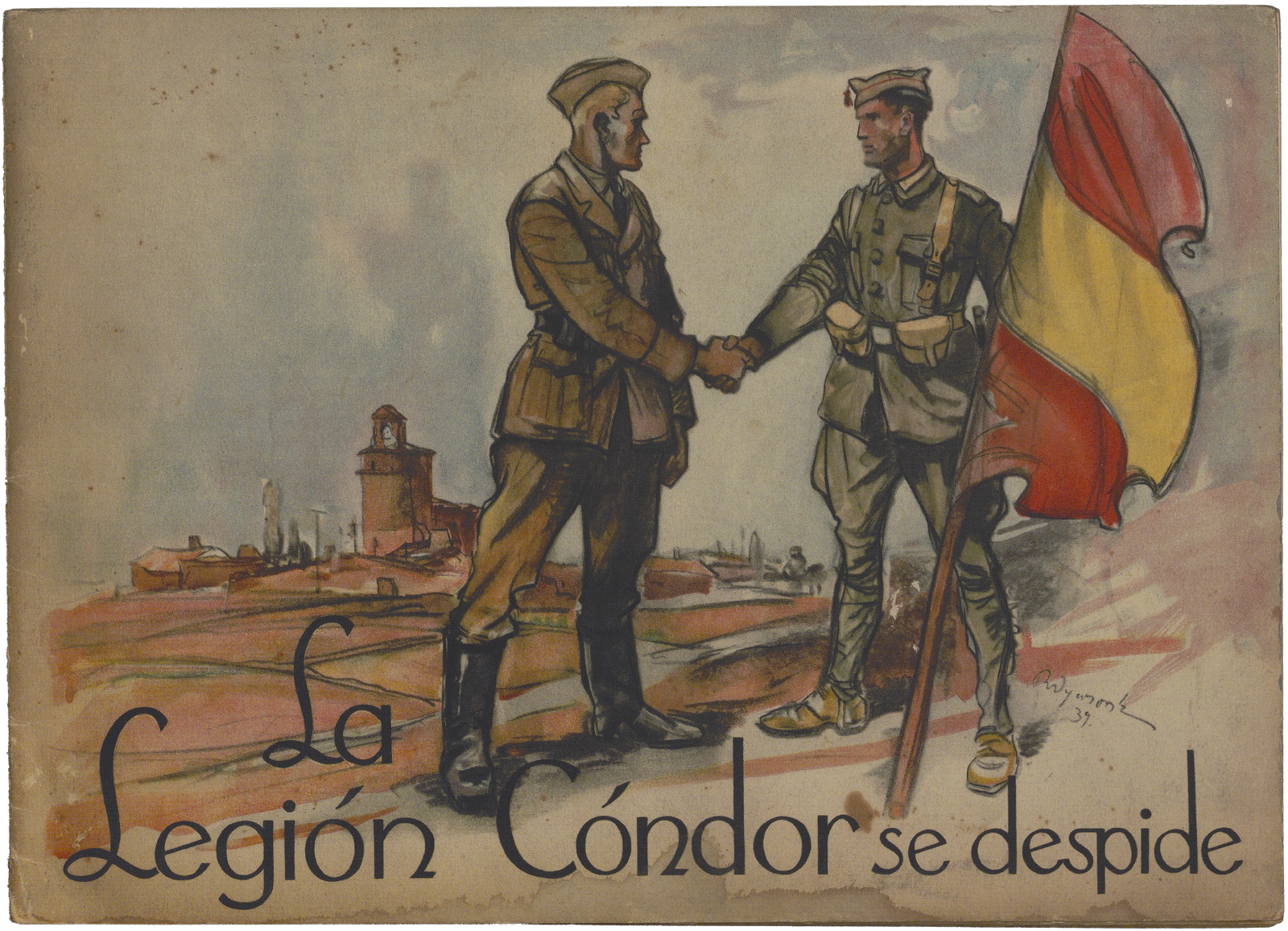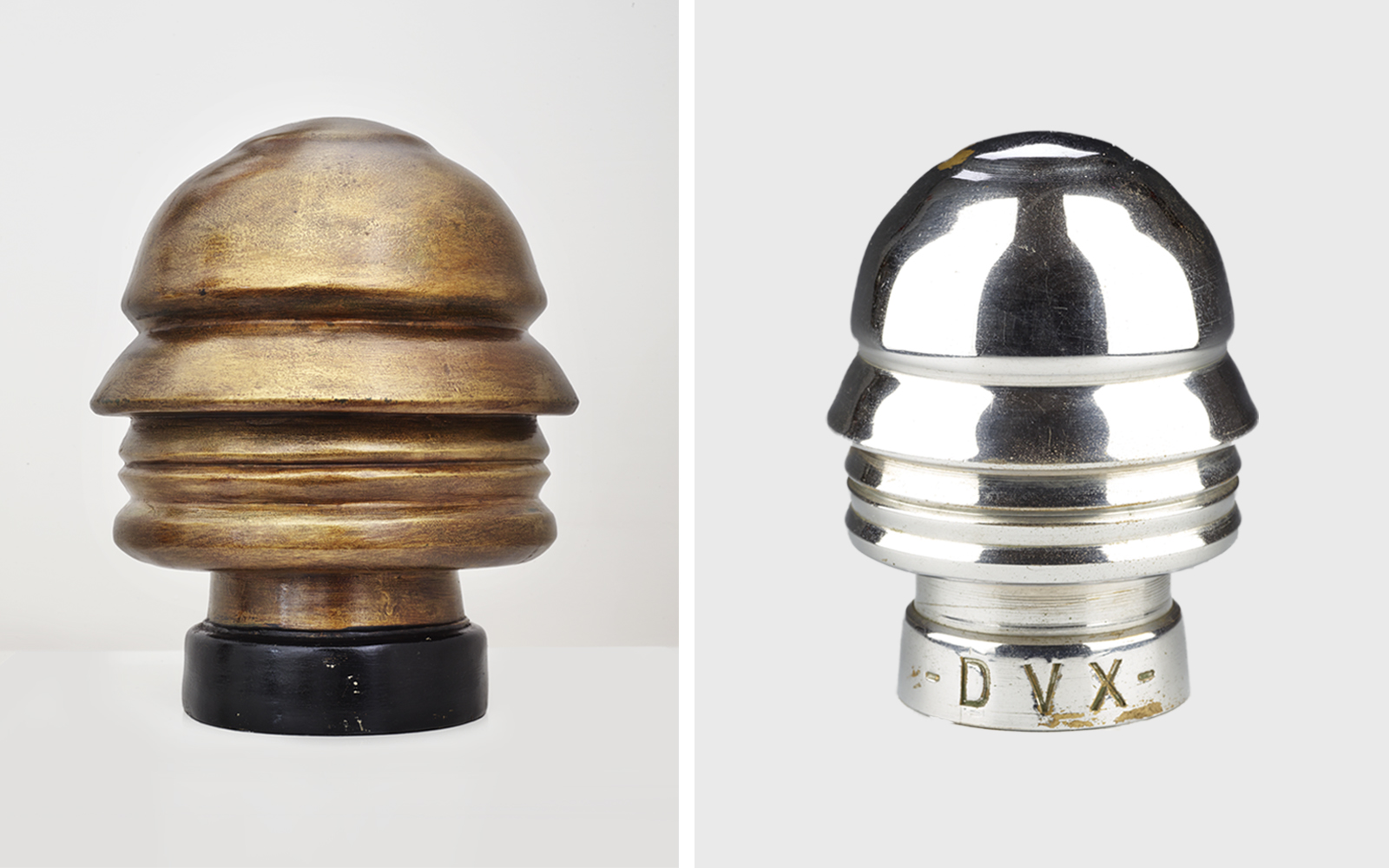April 30, 2025
By L.M. Bogad, Wolfsonian creative fellow
I'm a fan of The Wolfsonian. For many years, I've made an annual personal pilgrimage there. This spring, I had an opportunity to work with staff on a creative project, with access to the museum’s collection, as a Wolfsonian Creative Fellow.
The project that brought me here is Orwell's War, a screenplay I wrote about the famous author's time fighting in the Spanish Civil War (1936–39). Orwell and his wife, Eileen Blair, were among the thousands of people who went to Spain to help the democratically elected government of the Spanish Republic defend itself against a military rebellion by the country’s Fascist conservative forces. I believe that those seven months in Spain, from which he and his wife barely escaped alive, made Orwell into the writer who went on to write Animal Farm (1945) and 1984 (1949), the most influential English-language works to expose the evils of totalitarian political regimes.
More recently, I decided to write a stage play from the same story. A stage play is so wonderfully and maddeningly different from a screen play; they’re not really siblings, more like cousins. There are no extreme close-ups, point-of-view shots, or hyperrealistic action sequences; instead, mood, metaphor, and monologues encourage the audience’s suspension of disbelief and a deeper dive into a character’s psyche and emotions.

The Wolfsonian archives contain an incredible amount of material from 1930s Spain—before, during, and after the war—that could add texture and detail to my story. These include leaflets, pamphlets, magazines, posters, postcards from soldiers on the front to their families, examples of clothing and furniture, and other industrial design of the time. Many are troubling for how they reveal the dangers of totalitarian efforts to control thought (captured in 1984 neologisms like "doublethink," "blackwhite," and "duckspeak"). As 1984 argues, censoring and revising the historical record is a critical part of this control. The book's slogan expresses this perfectly:
He who controls the past, controls the future. He who controls the present controls the past.
Orwell's 1984 protagonist, Winston Smith, works in the Ministry of Truth, rewriting old newspaper articles that contain evidence of Big Brother or the Party lying or making a mistake. He rewrites them to "prove" that the leaders were right, and then deposits the old scraps of paper with the offending articles and their inconvenient facts into a slot by his desk, where they float down to the furnace to vanish forever; down the memory hole, as they say in the novel.

In Spain, Orwell witnessed how totalitarian rulers like Benito Mussolini, Adolf Hitler, and Joseph Stalin intervened and manipulated the historical record to their advantage. As the Stalin-backed Communist Party gained power, factional divisions fractured the Republican side. The small anti-Stalinist Marxist militia Orwell fought with (Workers Party of Marxist Unification, or POUM) was falsely accused of treason and banned at the Stalinists' behest. Many of the author's friends were arrested and some killed by the secret police. At The Wolfsonian, I found ephemera—Stalinist newspaper articles—that repeated these patently false accusations of the POUM, evidence of the purge that Orwell and his wife Eileen narrowly survived, and the kind of deadly propaganda his protagonist, Winston Smith, is forced to create, but secretly opposes, in 1984.

The Wolfsonian is the perfect place for researching this aspect of the Spanish Civil War. A Nazi book in the collection celebrates their military intervention against the Republic, through the Condor Legion’s aerial attacks (including wiping out the defenseless village of Guernica as a test of their weapons, immortalized by the famous, tragic painting by Picasso). The book justifies their assault by falsely claiming that the Nazis intervened only after the International Brigades had intervened on the side of the Republic. In fact, it was the Nazis who first intervened, helping Fascist leader Francisco Franco in the very first days of his rebellion against the democratically elected Republic with their Condor Legion. "Who controls the past, controls the future . . ."

Included in the Wolfsonian collection is an abstract Futurist bust of Benito Mussolini. Called Continuous Profile, the artwork depicts the dictator as a 360-degree icon, as if he is constantly spinning, surveilling everything around him. Big Brother is watching you. Orwell never saw this sculpture to my knowledge, but it represents the very all-seeing, infallible Dictator-God that he warned against. Mussolini loved this portrait so much that he had it mass produced, even in the form of paperweights.
The Wolfsonian holds ephemera and artwork that would have otherwise gone down the memory hole. Its mission goes against the drive to erase inconvenient historical truths and evidence, and its preservation of these scraps of history, and the creation of art that draws on these works, are inherently anti-totalitarian projects.
Banner image: Postcard (detail), "Avanzadilla anti-fascista en el ataque a Huesca" [Anti-fascist Advanced Party in the attack on Huesca], c. 1938. A. Garcia, illustrator. R. Molero, Barcelona, Spain, publisher. The Wolfsonian–FIU, The Mitchell Wolfson, Jr. Collection, TD1990.72.36. Orwell’s anti-fascist militia, the POUM, fought alongside other Republican forces on the Huesca front during the Spanish Civil War.
